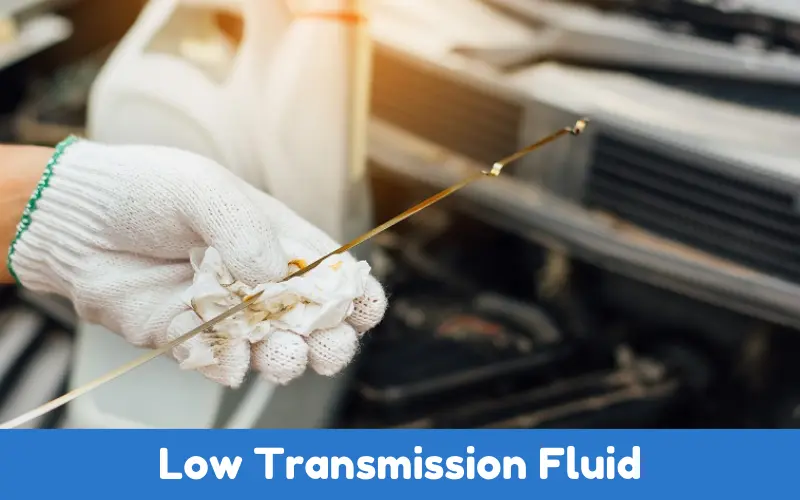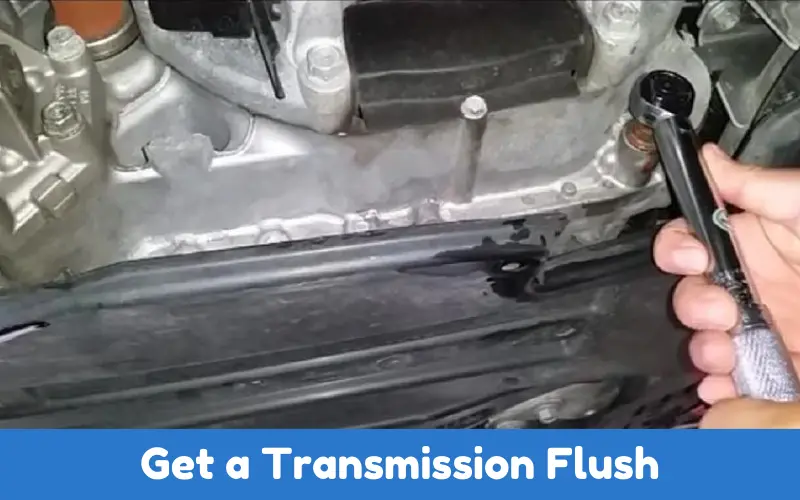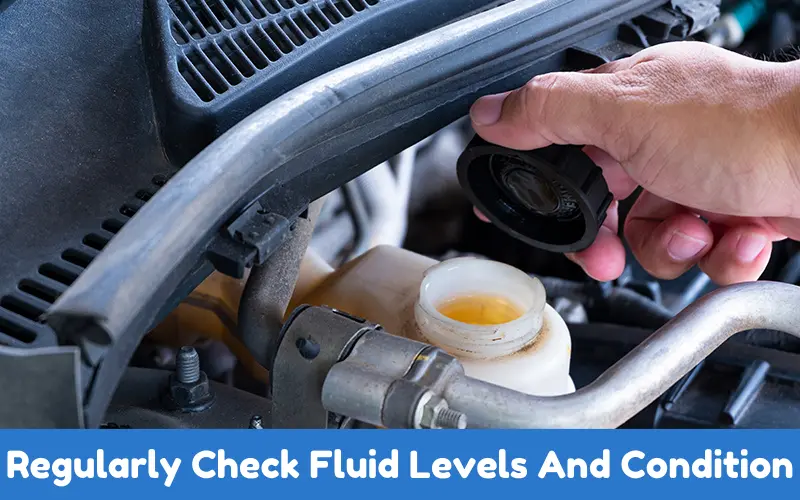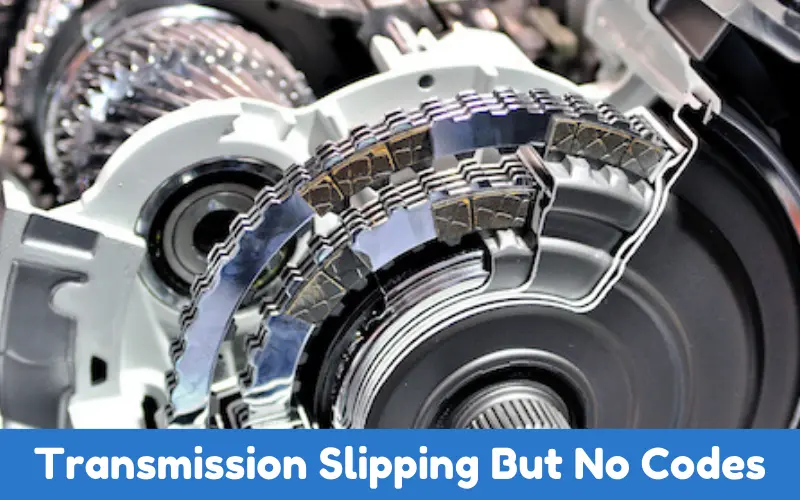It can be frustrating to experience problems like transmission slipping but no codes coming, and not receiving any check engine light.
When this happens, a delay in shifting gears, a revving when shifting is not expected, or a lack of response from the letters on the steering wheel can be the first noticeable signs. In any case, these symptoms are reliable indicators of a possible transmission issue.
We will dig into what can cause your car to transmission slipping but no codes and what you can do to get back on the road.
Article Summary
- Understanding Transmission Slipping: What Does It Mean?
- Why Transmission Slipping Might Not Trigger Error Codes?
- Causes of Transmission Slipping But No Codes
- How To Fix Transmission Slipping Without Codes?
- How To Maintain Your Transmission System?
- FAQS on Transmission Slipping But No Codes
- Why is My Transmission Slipping, But No Codes Are Showing Up?
- Can Low Transmission Fluid Cause Slipping Without Triggering a Code?
- How Do I Know If My Transmission Needs a Fluid Change or Flush?
- Can I Still Drive My Car If the Transmission is Slipping?
- What Should I Do If I’ve Checked the Fluid, And My Transmission is Still Slipping?
- Conclusion
Understanding Transmission Slipping: What Does It Mean?
Transmission slipping is a loss of traction or torque briefly wherein the car does not stay in gear or changes gears unintentionally.
This can make the tachometer in your car’s instrument cluster rev up or make it feel like it is losing power momentarily. Slipping symptoms include:
- Delayed acceleration
- Trouble shifting gears
- Unusual noises or vibrations
- Overheating of the transmission
In modern vehicles, sensors keep tabs on the transmissions, and a computer stores error codes when something’s amiss.
The mechanics read these to determine the problem. But what happens when there aren’t any codes?
Why Transmission Slipping Might Not Trigger Error Codes?
There are several reasons why a slipping transmission might not trigger any error codes:
Sensor Failures: Sometimes, a transmission sensor will wear down or be uncalibrated. It won’t see the slip if it isn’t picking up on data accurately, so no codes are set.
Intermittent Issues: Conversely, some intermittent transmission issues make them harder for sensors or you to detect. A restricted slip in the transmission, not necessarily severe enough to throw the code yet, will likely go undetected by sensors.
Mechanical Issues: A sensor might not monitor a particular mechanical problem with the transmission. The clutch plates, valve body, or torque converter could be bad and not throw a code.
Older Vehicle Models: Older vehicles just might not have the expensive sensor systems built into newer ones, so when it starts to slip or the transmission starts to act up, the car can’t record any codes.
Causes of Transmission Slipping But No Codes
If you’re seeing no error codes, here are some things to look out for when your transmission is slipping:
Low Transmission Fluid
Insufficient fluid is the most common cause of slippage. When fluid levels are low, the transmission won’t have the pressure to hold a gear. Check and add fluid if necessary.

Contaminated Fluid
Dirt and debris can eventually work into the transmission fluid, which can degrade over time. If the fluid has become dirty, old, or smells burned, it might be time for a transmission flush.
Worn or Damaged Clutch Plates
Slipping can also happen in a manual transmission if the clutch plates are worn and the friction material isn’t providing as much bite as it once did.
Faulty Torque Converter
An automatic transmission has what is called a torque converter. This part of the transmission transfers power from the engine to the transmission. If this component breaks or fails, the car could slip without throwing any codes.
Transmission Bands
Many automatic transmissions keep gears engaged by bands. When the bands stop holding, the gear can slip. A sensor might not detect this problem, especially on older vehicles.
How To Fix Transmission Slipping Without Codes?
If you’re getting slips and no error codes in your transmission, here’s what to do and maybe how to fix it:
1. Check And Top Off Transmission Fluid
It is a low or dirty transmission fluid responsible for slippage most of the time. To check this:
- Park on a Level Surface: Ensure your car is on a level surface, and the engine is warm.
- Locate the Dipstick: Remove the transmission dipstick, wipe it, reinstall it, and pull it out again to check the level.
- Check Fluid Condition: Remember, check the color and smell. What is the color? If it’s dark or there’s a burnt smell, it needs replacing.
- Add Fluid If Necessary: Add the correct kind of transmission fluid if levels are low, a small amount at a time, and check the level after each one to prevent overfilling.
If your fluid is contaminated or smells burnt, consider a transmission flush.
2. Get a Transmission Flush
Debris, as well as old fluid, can accumulate over time and contaminate the transmission. You might benefit from a transmission flush if your fluid is contaminated.

- Flush And Replace Fluid: The mechanic will drain the old fluid, flush out the system, and then refill the transmission with fresh fluid.
- Inspect Filters And Pan: Inspect the transmission pan and filters when the flush is made and clean or replace as required if the fluid is discolored or clogged.
- Note: Your vehicle might be an exception to this rule. It’s worth checking with a mechanic before getting a flush if you’ve put high mileage on your car.
3. Inspect Transmission Components
If fluid levels are okay, but the slipping persists, then factors such as the clutch plates, bands, or the torque converter, which are internal transmission components, could be the problem.
- Clutch Plates: Worn clutch plates could be causing a lack of friction in an automatic transmission, resulting in transmission slipping. The problem could be corrected by replacing the clutch plates.
- Bands: Bands assist automatic transmissions in holding the gear. When these wear out, they become adjusted or replaced.
- Torque Converter: Back when torque converters were common, slipping could occur if the unit was worn or faulty. The solution would be a straightforward replacement of a bad torque converter.
4. Reprogram or Update the Transmission Control Module (TCM)
The TCM (Transmission Control Module) in most modern automobiles controls shifting and transmission behavior.
Sometimes, the slipping issue can be solved by updating or reprogramming this module, often because of software bugs or calibration issues.
- Visit a Dealership or Specialist: Ask if your car is capable of any TCM software updates and if your car is calibrated, request to have it double-checked and updated (if needed) by a professional.
5. Perform a Road Test
You can also pick up transmission troubles that won’t show up on diagnostics with a road test. A mechanic can observe how your car shifts during street conditions.
- Pay Attention To Specific Symptoms: Suppose you notice it happening at 60kph, turning a certain gear, or under heavy acceleration. In that case, you can use that information to mutate actor traits and identify the specific problems that need to be targeted, such as a worn band or clutch.
6. Consider a Transmission Rebuild or Replacement
If that doesn’t work, or if all else fails and the slippage persists, a rebuild or replacement is in order, particularly in older or high-mileage vehicles.
- Rebuild: This calls for changing those worn-out constituents (clutch and seals) and reassembling the complete transmission. The work is cheaper than a full replacement but can extend the system’s usefulness.
- Replacement: When there is widespread damage, replacing the transmission is your best option. A brand-new or fully rebuilt replacement is your best shot for a long-lasting ride.
By fixing or at least correcting these items, transmission slip can often be cured or at the least mitigated without the nastiness of error codes.
However, if performing some or all of these steps would make you nervous, a good mechanic is your smartest option for diagnostic and repair work.
How To Maintain Your Transmission System?
Your best defense against slippage is to do regular service, especially if the vehicle is not triggered by one of those codes. Here’s how you can keep the sliding to a minimum:
Regularly Check Fluid Levels And Condition: Checking transmission fluid every few thousand miles or when you enjoy another driving accomplishment and filling it back up to the proper level (like, right this second) will nip many slipping issues in the bud.

Avoid Aggressive Driving: Punishing the transmission by flooring the accelerator puts extra stress on the clutch, particularly when the vehicle is not warmed.
Follow Scheduled Services: Sticking to the manufacturer’s recommended service intervals for fluid changes and inspections can help your transmission live longer.
FAQS on Transmission Slipping But No Codes
Why is My Transmission Slipping, But No Codes Are Showing Up?
Low or dirty fluid, worn internal components (clip plates or bands), or sensor faults can also cause slipping without error codes. Or the problem might be intermittent or subtle enough that the sensors can’t pick it up, particularly on older or less electronically advanced vehicles.
Can Low Transmission Fluid Cause Slipping Without Triggering a Code?
Low transmission fluid is one of the most common causes of slipping, and not every slipping condition will set a code. If the fluid level is low enough, the transmission cannot develop enough pressure to stay in gear or to hold up a vehicle. When the fluid is low, the easiest fix is to check it and add it to the proper level as needed.
How Do I Know If My Transmission Needs a Fluid Change or Flush?
Dark fluid, a burnt smell, or the presence of particles usually indicate that your transmission fluid needs a change or flush. Scheduled fluid changes help keep intricate transmissions in good order and prevent them from slipping. A mechanic might tell you not to flush if your car has high mileage.
Can I Still Drive My Car If the Transmission is Slipping?
You could drive it, sure, but not for long. Slipping is a sign that something’s wrong, and driving longer without fixing it could lead to serious, expensive damage.
What Should I Do If I’ve Checked the Fluid, And My Transmission is Still Slipping?
If the slippage occurs even after a top-off or fluid change, worn clutch plates, bands, or a bad torque converter might be at fault. A mechanic should thoroughly inspect your transmission to understand what’s going on. That means a road test, perhaps a check of internal parts, or a reprogramming of the transmission control module (TCM).
Conclusion
Transmission slipping where no error codes occur can be annoying, but it’s usually due to low fluid levels, worn components, or sensor failure.
A fluid quality check, professional diagnosis, or control module update often resolves the problem.
Catching slipping early will reduce the chance of more serious damage, leading to smoother running and minimizing repair costs.

